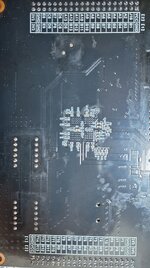BZMContact
Newbie

Hello!
I started learning VHDL this semester and, although the university has prototyping boards, I decided to buy my own. However, the board I bought (Cyclone IV Intel+Altera) did not come with any DIP switches. It only has GPIOs. How could I connect these switches to the FPGA board? And the LEDs to generate the results in binary, how should they be connected to avoid burning them or damaging the board?
The first project I would like to implement is a 4-bit adder.
Thank you very much for your help.
I started learning VHDL this semester and, although the university has prototyping boards, I decided to buy my own. However, the board I bought (Cyclone IV Intel+Altera) did not come with any DIP switches. It only has GPIOs. How could I connect these switches to the FPGA board? And the LEDs to generate the results in binary, how should they be connected to avoid burning them or damaging the board?
The first project I would like to implement is a 4-bit adder.
Thank you very much for your help.


